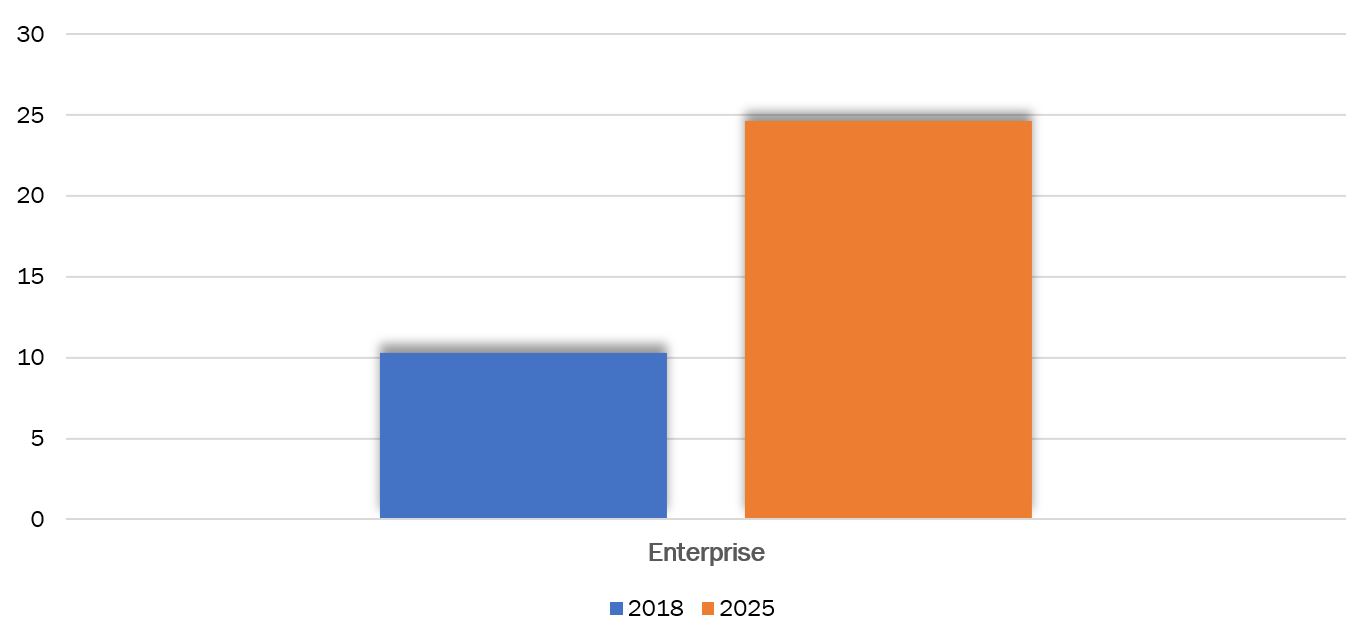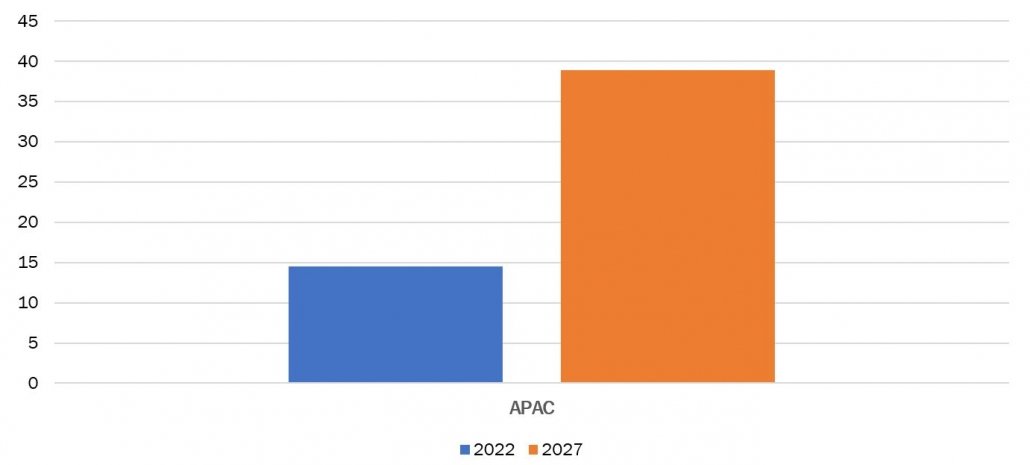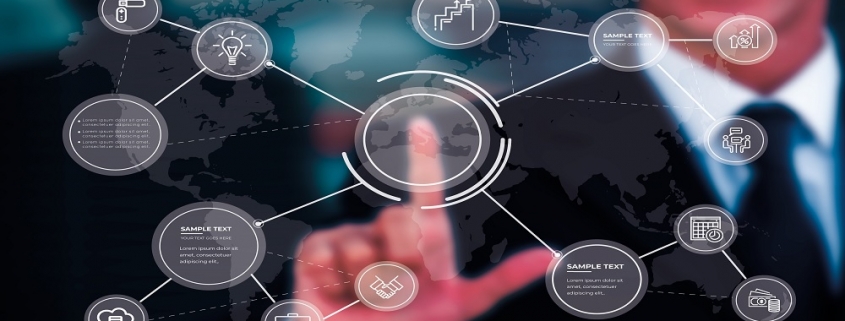Unveiling the Top 10 IOT Technologies
The Internet of Things (IoT) is a network of interconnected devices, objects, and systems that are equipped with sensors, software, and network connectivity, allowing them to collect and share data. These technologies have transformed various industries and provided numerous benefits. IoT technology improves efficiency and productivity by automating tasks, streamlining processes, and providing real-time data. The seamless connectivity and data exchange enabled by IoT technologies have enormous potential for transforming industries, improving decision-making, and improving the quality of life for individuals and communities. Join us as we explore the “Top 10 IOT Technologies ” in this article that have changed industries and provided many advantages.
Top 10 IOT Technologies
- Edge Computing
- Artificial Intelligence (AI) and Machine Learning
- Extended Reality (XR)
- Robotic Process Automation (RPA)
- 5G Technology
- Blockchain Technology
- IoT in Farming
- IoT in Emergency Management
- Smart City
- Smart Devices
Let’s discuss each one in detail
1. Edge Computing
Edge computing refers to the practice of processing data at the network’s edge, closer to the source of data generation, rather than relying entirely on cloud-based servers. This distributed system is critical to enabling the Internet of Things (IoT) as it allows for quick analysis and response directly at edge devices, eliminating the need to transmit large amounts of data to remote servers for processing. The technology has applications in a variety of fields, including smart cities, manufacturing, healthcare, and transportation, and by utilizing the power of edge Computing, IoT devices can perform real-time data. In January 2024, IBM announced a new collaboration with American Tower, a global digital infrastructure provider, to accelerate the implementation of a hybrid, multi-cloud computing platform at the edge. Through this collaboration, American Tower intends to broaden its neutral-host Access Edge Data Center ecosystem by incorporating IBM Hybrid Cloud capabilities and Red Hat OpenShift.
2. Artificial Intelligence (AI) and Machine Learning
Artificial intelligence (AI) and machine learning (ML) are revolutionary technologies that have had a significant impact on a variety of industries, including the Internet of Things. AI refers to the simulation of human intelligence in machines, which allows them to replicate and perform tasks that would normally require human intelligence. Machine learning (ML) is a subset of artificial intelligence that focuses on algorithms and statistical models to allow systems to learn and improve from experience without explicit programming. When combined with IoT, these technologies create a powerful framework for exchanging and analyzing massive amounts of data collected from connected devices.
The United States and China are the two countries where AI and machine learning technologies are rapidly expanding owing to the favorable investments in such projects. For instance, in October 2023, The US National Science Foundation invested $10.9 million in the development of protected artificial intelligence technologies. Additionally, according to the United States Census Bureau, 3.8% of businesses in the United States use AI to produce goods and services.
3. Extended Reality (XR)
Extended Reality (XR) is an immersive technology that combines virtual reality (VR), augmented reality (AR), and mixed reality (MR) to create a more engaging and interactive digital experience. It enables users to interact with a synthetic environment that combines physical and virtual elements. The advantages of Extended Reality (XR) are numerous, ranging from transforming industries such as gaming, education, healthcare, and architecture to improving training simulations. It provides an unprecedented level of immersion, interactivity, and visualization, creating new opportunities for creativity, communication, and problem-solving.
Europe is experiencing significant growth in the XR in major economies such as Germany, the United Kingdom, and France due to several investments. For instance, in June 2023, the European Commission announced its investment of $10 billion in critical technologies, including virtual reality, through its Strategic Technologies for Europe Platform (STEP). Additionally, in July 2023, The European Commission announced a strategy, “An EU initiative on Web 4.0 and virtual worlds: a head starts in the next technological transition,” to align XR technologies such as VR and AR with the European virtual world.
4. Robotic Process Automation (RPA)
Robotic Process Automation (RPA) allows businesses to automate repetitive and rule-based tasks using software robots or bots. These bots simulate human interactions with various digital systems and applications, performing tasks such as data entry, extraction, and validation. RPA technology is intended to streamline and optimize business processes, increase productivity, and reduce human error. It enables businesses to automate time-consuming and routine duties, freeing up human employees to focus on more valuable activities. Robotic Process Automation can be used in a variety of industries and sectors, resulting in significant cost savings, increased efficiency, and higher accuracy in repetitive tasks.
North America is experiencing significant growth in RPA due to the presence of several industry leaders and numerous collaborations. For instance, in March 2021, Amentum, a leading contractor to the United States federal and allied governments, announced a new collaboration with UiPath, a leading enterprise RPA software company. Under the terms of the new agreement, the companies collaborated to bring the benefits of automation, which are already being used by many federal agencies, to mission-critical customers in Amentum’s portfolio of national significance programs.
5. 5G Technology
5G technology is the fifth generation of wireless communication and represents a significant advancement in terms of speed, capacity, and connectivity. It provides seamless connectivity between devices, resulting in faster data transfer rates and lower latency. With speeds up to 100 times faster than 4G, 5G enables a diverse range of innovative applications and services. 5G applications span a wide range of industries, including autonomous vehicles, the Internet of Things (IoT), virtual reality (VR), augmented reality (AR), and robotics.
Figure 1: IOT Connections, in Billions, From 2018 to 2025

Source: GSMA Intelligence
Asia Pacific is growing significantly in 5G technology, which is fuelling the growing number of IoT devices in the region. With its dense population and emerging markets, Asia Pacific has emerged as an area of IoT innovation and adoption. The deployment of 5G networks has created new opportunities for connectivity and significantly increased the number of IoT devices.
Figure 2: IOT Devices in APAC Region, in Billions, From 2022 to 2027

Source: OMDIA
6. Blockchain Technology
Blockchain technology is a revolutionary concept that is essentially a distributed ledger system that records and verifies transactions on multiple computers. One of its key characteristics is transparency, as users can easily track and verify any transaction conducted on the blockchain. The technology is used in a variety of industries, including finance, supply chain management, and healthcare. It facilitates secure and unbreakable transactions, eliminates the need for intermediaries, and improves data privacy. Additionally, blockchain has the potential to disrupt traditional industries by offering low-cost, high-efficiency solutions.
India and Japan are at the leading edge of Blockchain Technology due to several government initiatives. For instance, in April 2022, Fujitsu and IHI started a joint project on a new environmental value distribution platform utilizing blockchain technology. Additionally, in December 2021, The Minister of State for Electronics and Information Technology released the National Strategy on Blockchain, which ensures security and privacy while allowing only trusted organizations with privileges to record and access details in an accountable manner.
7. IoT in farming
The Internet of Things (IoT) in farming is a revolutionary technology that is reshaping the agricultural sector. Farmers can use IoT devices and sensors to remotely monitor and manage their farms, increasing efficiency and productivity. These devices collect real-time data on soil moisture levels, temperature, humidity, and crop health, giving farmers valuable information about their fields’ conditions. The advantages of IoT in farming are numerous, as it enables precise and targeted application of water, fertilizers, and pesticides, reducing waste and ensuring maximum crop yield.
Asia Pacific is growing significantly in IOT in Farming in major economies in the region such as India and China. According to the Press Information Bureau, the Department of Science and Technology (DST) implemented the National Mission on Interdisciplinary Cyber-Physical Systems (NM-ICPS). Under the Mission, 25 Technology Innovation Hubs (TIHs) have been established at premier institutes of national importance across the country in advanced technology verticals, and three of these TIHs are involved in the use of IoT and AI in agriculture.
8. IoT in Emergency Management
The Internet of Things (IoT) revolutionized many industries, including emergency management. In emergency management, the IoT signifies the use of interconnected devices and sensors to improve response and rescue operations in critical situations, and by combining sensors, cameras, wearable devices, and drones, emergency responders can collect real-time data and make informed decisions quickly. The advantages of implementing IoT in emergency management are significant as it allows for early detection and prediction of natural disasters, improves situational awareness, optimizes resource allocation, and promotes timely communication between responders and affected individuals. Additionally, IoT devices also help with post-disaster recovery by monitoring infrastructure health and tracking survivors. North America is experiencing significant growth in the implementation of IOT in Emergency Management due to the advanced technologies and infrastructure.
9. Smart City
The integration of Internet of Things (IoT) technology into smart cities drastically altered urban landscapes around the world. In an IoT-powered smart city, multiple devices and systems are interconnected and communicate with one another, resulting in increased efficiency, sustainability, and quality of life for residents. The advantages of IoT in smart cities are numerous as it allows for real-time monitoring and efficient management of utilities that include energy, water, and waste management. Smart transportation systems improve traffic flow and reduce congestion, while smart buildings promote energy efficiency and sustainable living.
North America is projected to grow significantly in IoT smart cities due to highly advanced technological infrastructure with extensive internet connectivity and effective communication networks in major countries of the region, such as the US and Canada, which facilitates the seamless integration of IoT devices and systems within smart cities.
10. Smart Devices
IoT smart devices include sensors, software, and connectivity capabilities that allow them to collect and exchange data over the internet. These devices are linked together via the internet and provide numerous benefits, including smart home appliances and wearable gadgets, as well as industrial sensors and healthcare monitors. One of the primary benefits of IoT smart devices is convenience as IoT allows one to control and monitor various devices remotely from a smartphone or other smart devices. It enables users to effectively manage their homes and offices. IoT devices provide valuable data insights, allowing businesses to make informed decisions, improve productivity, and optimize processes.
China and Japan emerged as a significant growing region of IoT Smart Devices due to the implementation of the Internet of Things in numerous sectors to increase automation. For instance, in March 2022, Firedome announced its partnership with Hitachi Solutions to advance IoT Security in Japan. Additionally, in June 2023, ABB and China Telecom launched a joint digitalization and industrial IoT laboratory in Hangzhou, China, and the collaboration between ABB Measurement & Analytics China Technology Center and China Telecom’s Internet of Things subsidiary, E Surfing IoT focuses on creating end-to-end industrial IoT solutions for Chinese manufacturers.



